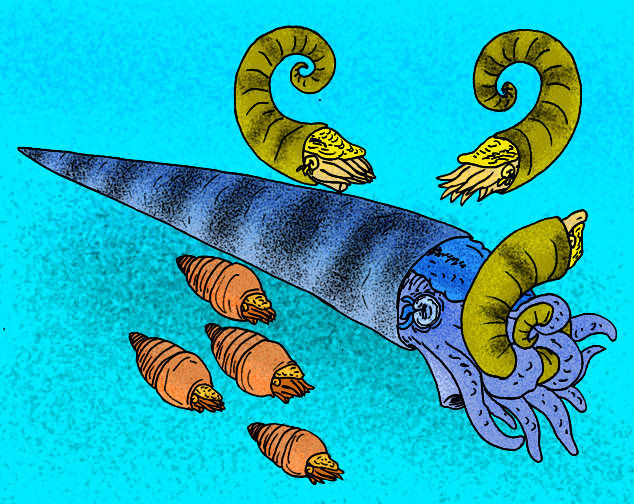Saturday, October 16, 2010
October 16, 2010 : Giant Orthocone (Extinct)
Giant Orthocone
The partial shell of one giant Cameroceras yielded a total length estimated at the time at nearly 30 feet (9 m). (This estimate has since been revised downward quite a bit.) Regardless of this estimate's degree of accuracy, this gargantuan cephalopod was one of the largest animals ever to live during the Paleozoic Era, if not the largest. Judging from its huge size, it was likely an apex predator that lived in deeper water (it would possibly have been unable to maneuver in shallow water), and probably fed on eurypterids such as Megalograptus, large trilobites, and smaller cephalopods. The program "Chased by Sea Monsters" speculatively suggests that it was largely blind, having large, yet feeble eyes like those of what may be its closest living relative, Nautilus.
"Cameroceras" has become a catch all term, or "wastebasket taxon," for any large orthoconic endocerid such as Endoceras, Vaginoceras, Meniscoceras, and even Cameroceras as a described genus. Although Cameroceras trentonense was first described by Conrad for the species in 1842 since then the generic term has had variable meaning. Hall, who named and described Endoceras in 1847 recognized Cameroceras trentonense specifically but used Endoceras for other species of large endocerids from the Trenton Limestone of western New York state.
"Cameroceras" and "Endoceras" may even apply to different stages of the same species. Although Cameroceras takes precedence where the two refer to the same species, its vague application leaves Endoceras or other well described genus the term of choice.
Subscribe to:
Post Comments (Atom)


No comments:
Post a Comment